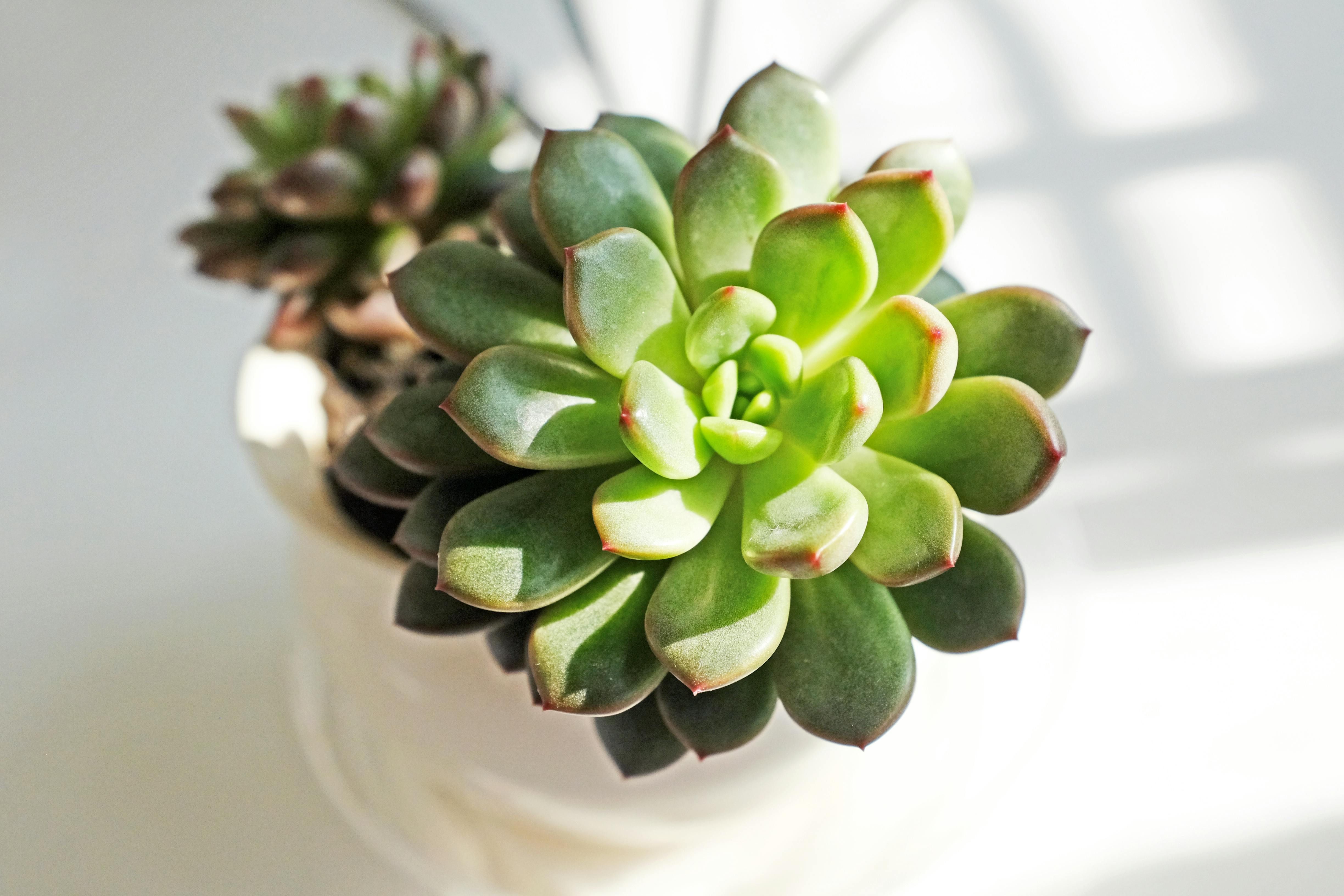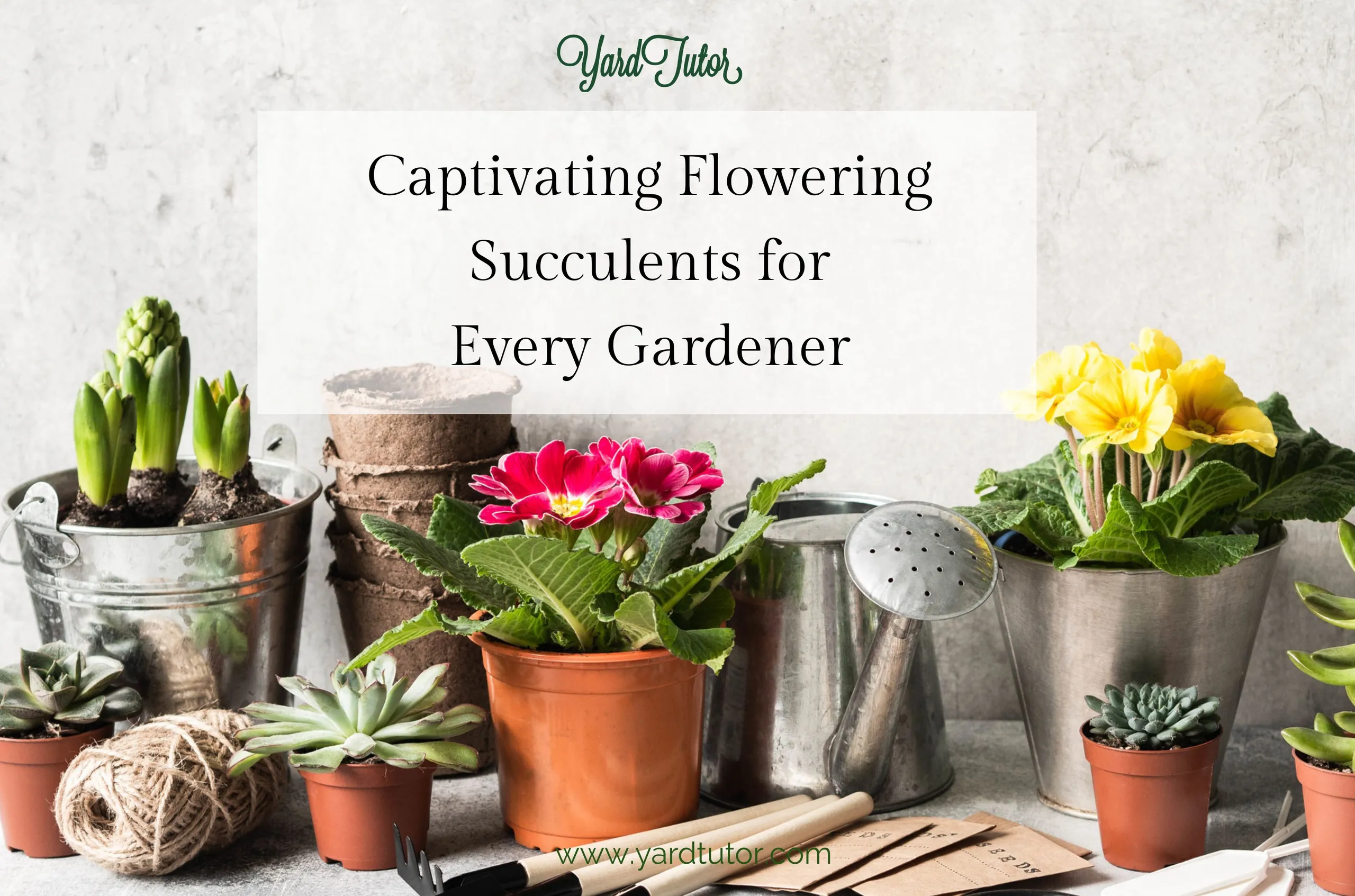How to Grow Succulents for Beginners

If you're new to the plant parent club, succulents are your go-to pals. Why? Because growing succulents is practically foolproof, thanks to their hardy nature, minimal maintenance needs, and a knack for thriving in various conditions. And let's not forget how gorgeous they look!
In this guide, I'll walk you through the ABCs of growing succulents, from picking the right ones to making more of them correctly. Plus, I've added some nifty tips as a bonus! So read till the end. Now let's dive in to flourish your green thumb!
Step 1. Choosing the Right Succulents

Photo by Valeriia Miller from Pexels
Before anything, figure out what succulents you want! This may seem obvious, but when you're surrounded by all those beautiful options in the store, it's tempting to ignore everything and pick what looks the prettiest. And, that’s a no-go!
With thousands of succulent plants to choose from, ease of care is key for beginners. Opt for low-maintenance and hardy varieties like Echeveria, Aloe, or Sedum.
You also need to consider where you want to grow them. If you want to grow your succulents indoors, go for shade-loving indoor succulents like Zebra Plants or Snake Plants.
But if you want to grow them outside, choose Echeveria or Euphorbia varieties that thrive in sunlight. But remember, each succulent is unique, so choose the ones that resonate with your style and complement your surroundings.
Step 2. Potting and Soil Preparation

Photo by Tima Miroshnichenko from Pexels
Now that you know what succulents to plant, time to move on to the next step. If you’re planning to grow your succulents indoors, buy well-draining pots with drainage holes. You can also buy regular pots and cut drainage holes in them. Plus, it’s better to get terracotta pots than plastic ones.
If you want to plant them outside, make sure the soil drains well. If it doesn't, add sand or gravel to help the water drain away faster.
For soil, you can buy premixed succulent soil from any garden center. However, if you want to go the DIY–route, you can create a suitable soil mix by combining 2 parts coarse sand, 2 parts potting soil, and 1 part perlite or pumice. This blend ensures optimal aeration and prevents waterlogging.
Get more details about how to mix soil for your succulents.
Step 3. Lighting Condition

Photo by Daan Stevens from Pexels
Proper lighting is essential for your succulent plants to survive. But keep in mind that not all succulents need the same amount or kind of light.
Some succulents such as Ghost Plants or Angel Wings thrive in bright, direct sunlight, making them ideal for outdoor gardens. And, some succulents, like ZZ Plants or Aloe vera, can happily grow indoors with a little bit of sunlight. Here's an interesting read on how much sunlight your succulents might need.
It’s best if your plumpy buddies get at least 6 hours of sunlight each day. However, sunlight isn’t mandatory for them to grow well; you can use grow lights instead.
Step 4. Finding the Ideal Temperature and Humidity for Your Succulents

Photo by Amelia Cui from Pexels
Succulent plants aren't very choosy about temperature, but it's necessary to ensure an optimal climate for proper growth. The ideal temperature for succulents is typically between 55°F and 75°F, but they can tolerate temperatures ranging from 45°F to 85°F. Plus, these hardy plants can handle low humidity, but they thrive best at 40-50% humidity.
Now take a look at the ideal temperatures and humidity levels for five common succulents. Do a little research to figure out the right temperature and humidity for your specific succulent.
| Succulent | Ideal Temperature | Ideal Humidity Level |
| Aloe Vera | 55° to 80°F | 30% to 50% |
| Jade Plant | 50° to 75°F | 30% to 50% |
| String of Pearls | 70° to 80°F | 30% to 50% |
| Panda Plant | 60° to 75°F | < 40% |
| Snake Plant | 65° to 80°F | 40% to 50% |
Step 5. Watering Your Succulents

Photo by lil artsy from Pexels
The watering needs of your succulents will vary depending on their location, whether they’re indoors in a pot or outdoors in the ground and the specific type you have. Usually, succulents thrive when watered every two weeks during the growing seasons and once a month in winter.
And when you water your actively growing succulents, it’s best to give them a good soak, and then wait until the soil is bone dry before watering them again. Keep it simple: soak, dry, repeat!
Step 6. Propagation Methods: Leaf-cuttings and Offshoots

Photo by Kenneth Surillo from Pexels
You don't always have to buy new succulents; you can easily grow more from the ones you already have. Succulent propagation can be done in two ways: leaf cuttings and offshoots.
To propagate from leaf cuttings, carefully detach a healthy leaf, let it dry until calloused, then place it on well-draining potting soil. Water sparingly, and after a few weeks when roots emerge, detach the parent leaf. And, you got a new succulent!
To propagate succulents via offshoots, gently detach the offshoot from the parent plant, allow it to air dry for a day, then plant it in well-draining soil and water sparingly.
Well, as a beginner you are not going to use propagation often, if ever. The real process is a little more detailed than outlined here but the basics are more or less the same. Before you decide to try propagation learn what is best for that particular succulent i.e. propagating from leaves or shoots, propagating in water or soil, etc. Usually, succulents with offshoots or stems are easier to propagate while it is pretty difficult when the succulent grows from seeds.
A Few Tips to Keep Your Succulents Thriving
Succulents are hardy plants. But they still require proper care to thrive. So, here are some tips to help you keep your succulents alive and vibing:
- Keep in mind that different succulent plants have varying care requirements. Familiarize yourself with the specific needs of the succulents you have.
- Check humidity level regularly and avoid overcrowding. Remember, overcrowding can lead to increased humidity, which may lead to fungal diseases. If you are arranging them together, here are some easy yet amazing ideas.
- Adjust your care routine based on seasonal changes as some succulents may enter a period of dormancy during the winter, requiring less water.
- Succulents are slow growers, and they might take some time to reach their full potential. Be patient and resist the urge to over-care for them.
Conclusion
While nurturing succulents is super easy, it's crucial not to overlook their care. Just sticking to the simple steps outlined in this article will help you succeed. Whether you choose to grow succulents indoors or out, with just a little bit of care and attention you can enjoy all the benefits these resilient beauties bring to your home.













